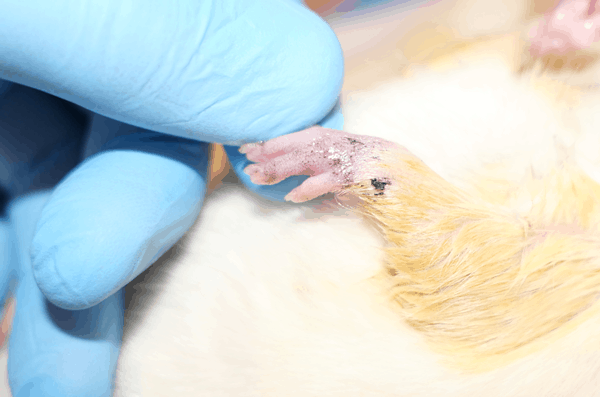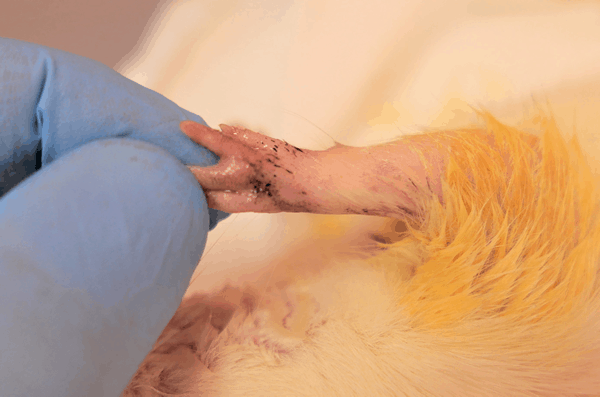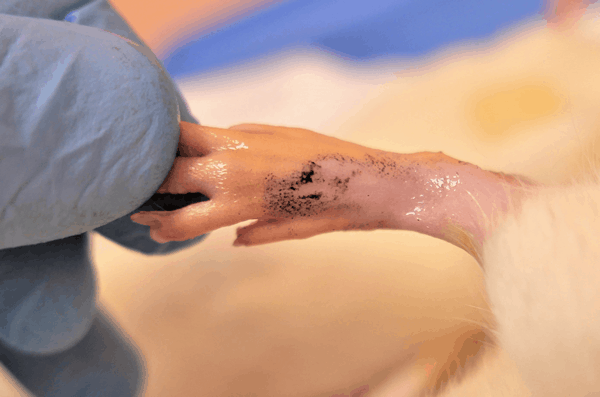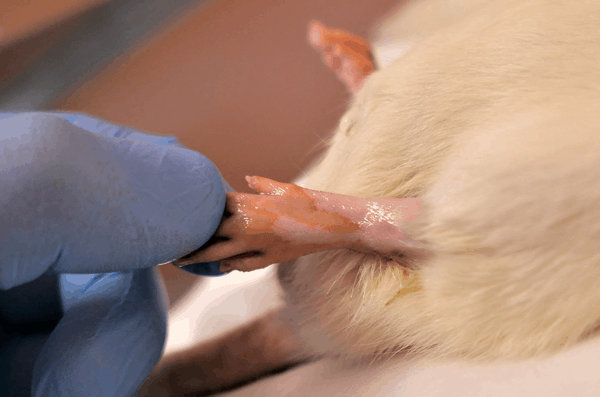Reminder: Please stop the video before closing this pop-up.
Operating hypothesis tested: NovochizolTM-formulated Botulinum toxin extends the anti-perspiration activity of a commercial preparation of Botulinum toxin (Xeomin ®) following sub-cutaneous injection and pilocarpine stimulation in rats.
Each animal received a sub-cutaneous injection in each of its paws as follows:
Methods
First, rats were anesthetized through an intraperitoneal injection of Zoletil 100. Each paw (plantar surface ) was injected a 50 μl sample (as shown in the table above) using an insulin syringe.
Then, pilocarpine iontophoresis (sweat test) was carried out after 1, 2 and 3 weeks. Next, a 1% solution of iodine in ethanol was applied over the entire surface of the paws and let to dry. After that, a suspension of starch in mineral oil ( 5 gr/ml) was then applied to each paw, followed by an injection of pilocarpine (50 μg) beneath the plantar surface. Then, the top portions of the paws were then observed and phographed. Finally, active sweating manifested itself through the formation of black spots at the exit points of sweat gland ducts and were clearly visible by the naked eye.
Results
As a result, at 1 and 2 weeks apost-injection, both Xeomin- and Novochizol-Xeomin -treated paws did not show any evidence of pilocarpine-induced sweating.
However at week 3, Xeomin-treated paws were capable of sweating again, while Novochizol-Xeomin still resisted sweating after pilocarpine stimulation:




Reminder: Please stop the video before closing this pop-up.
Reminder: Please stop the video before closing this pop-up.
Reminder: Please stop the video before closing this pop-up.
Reminder: Please stop the video before closing this pop-up.